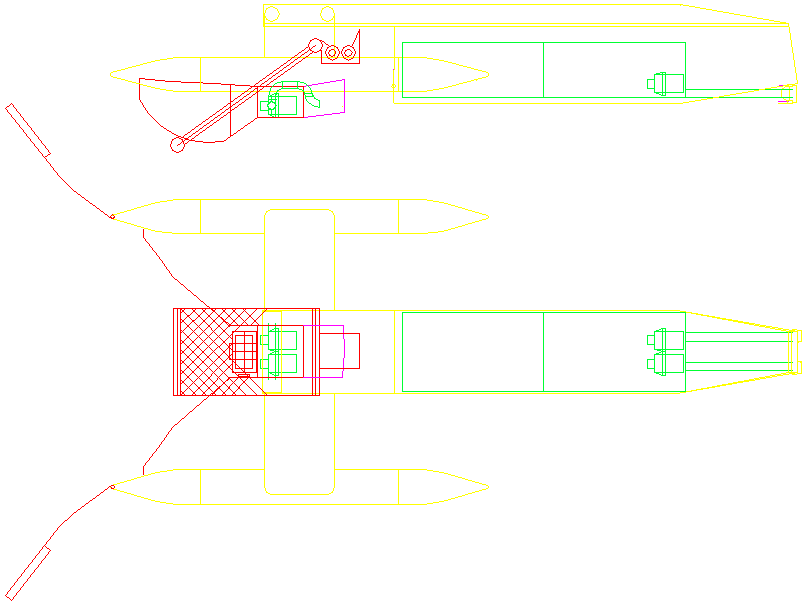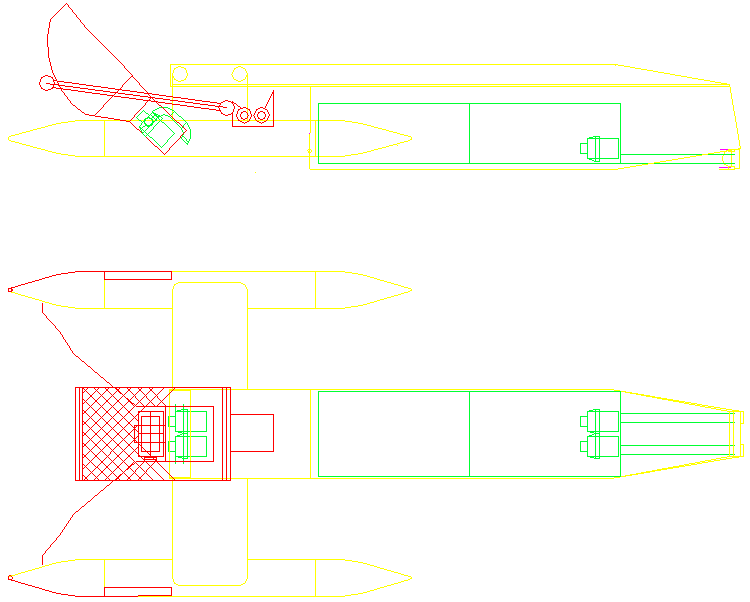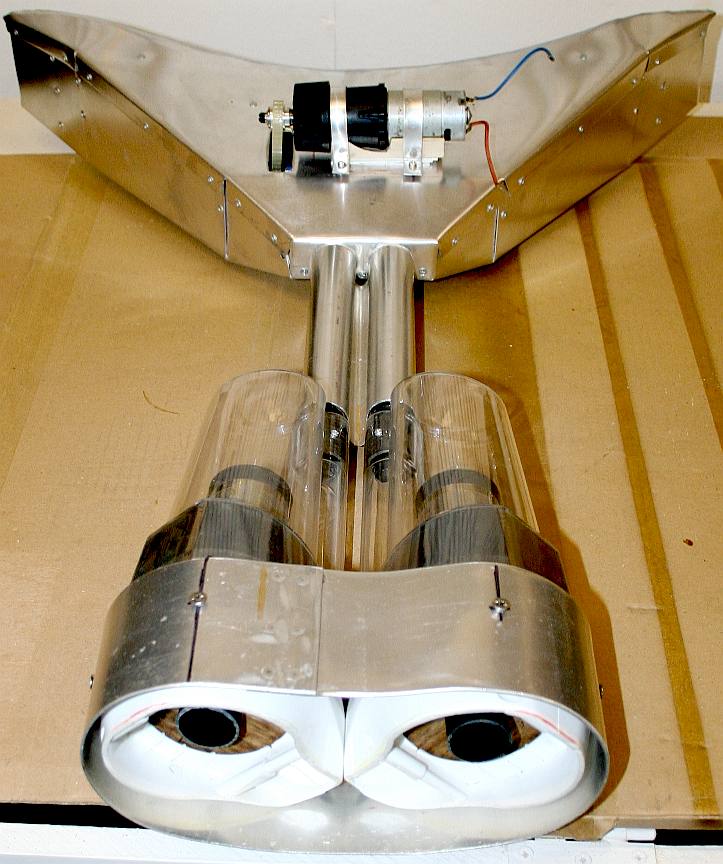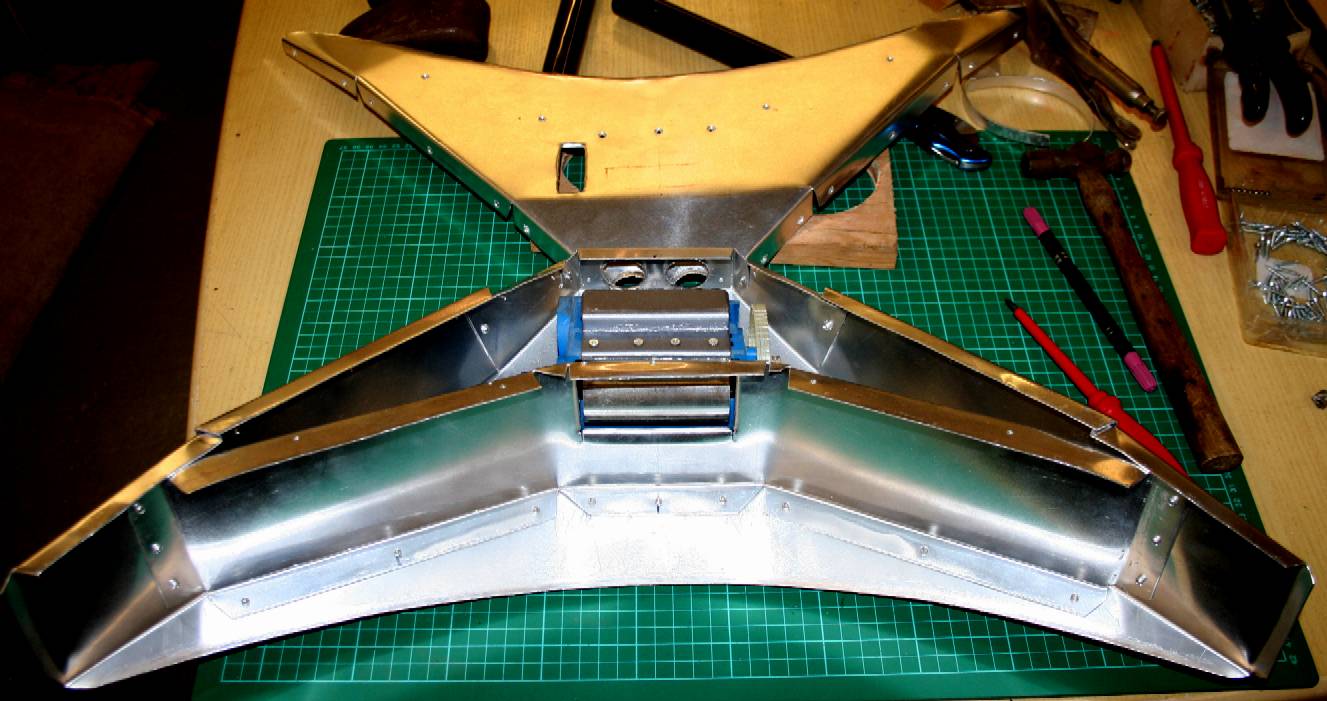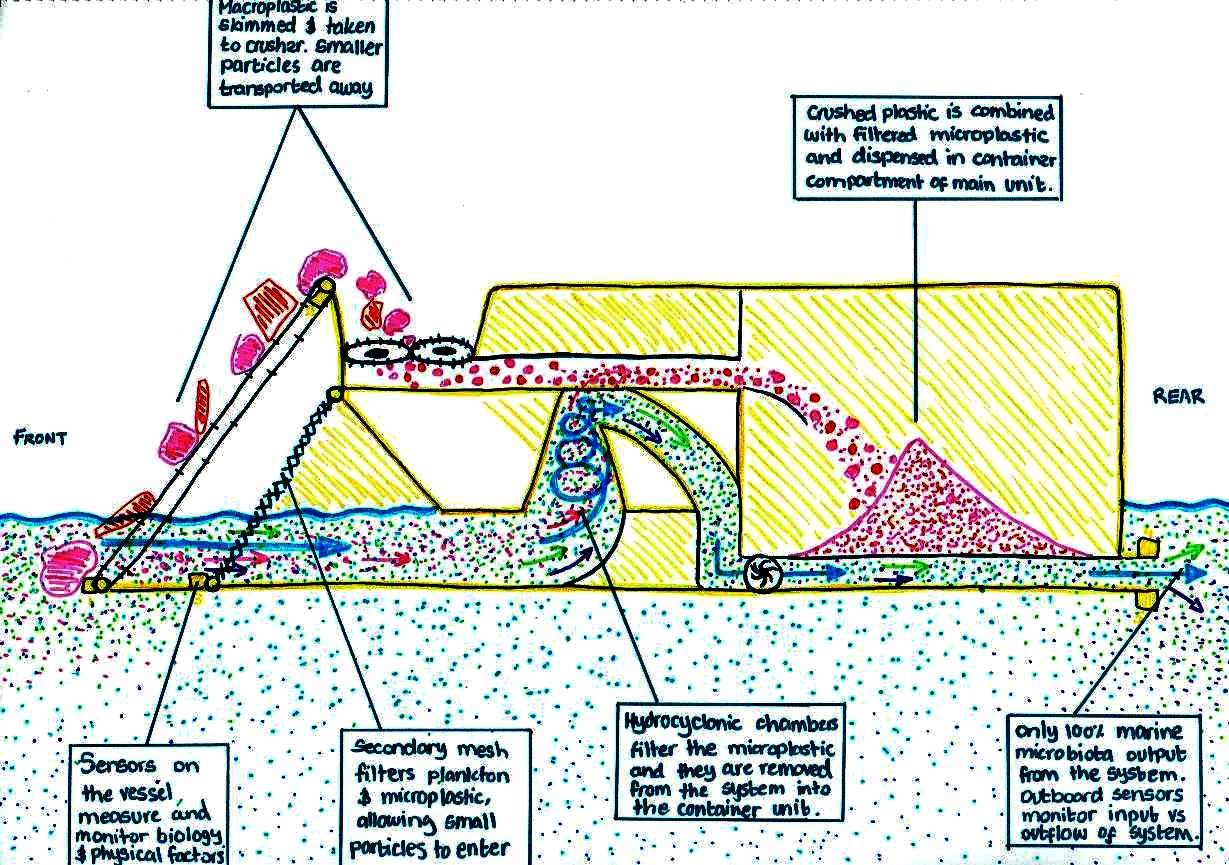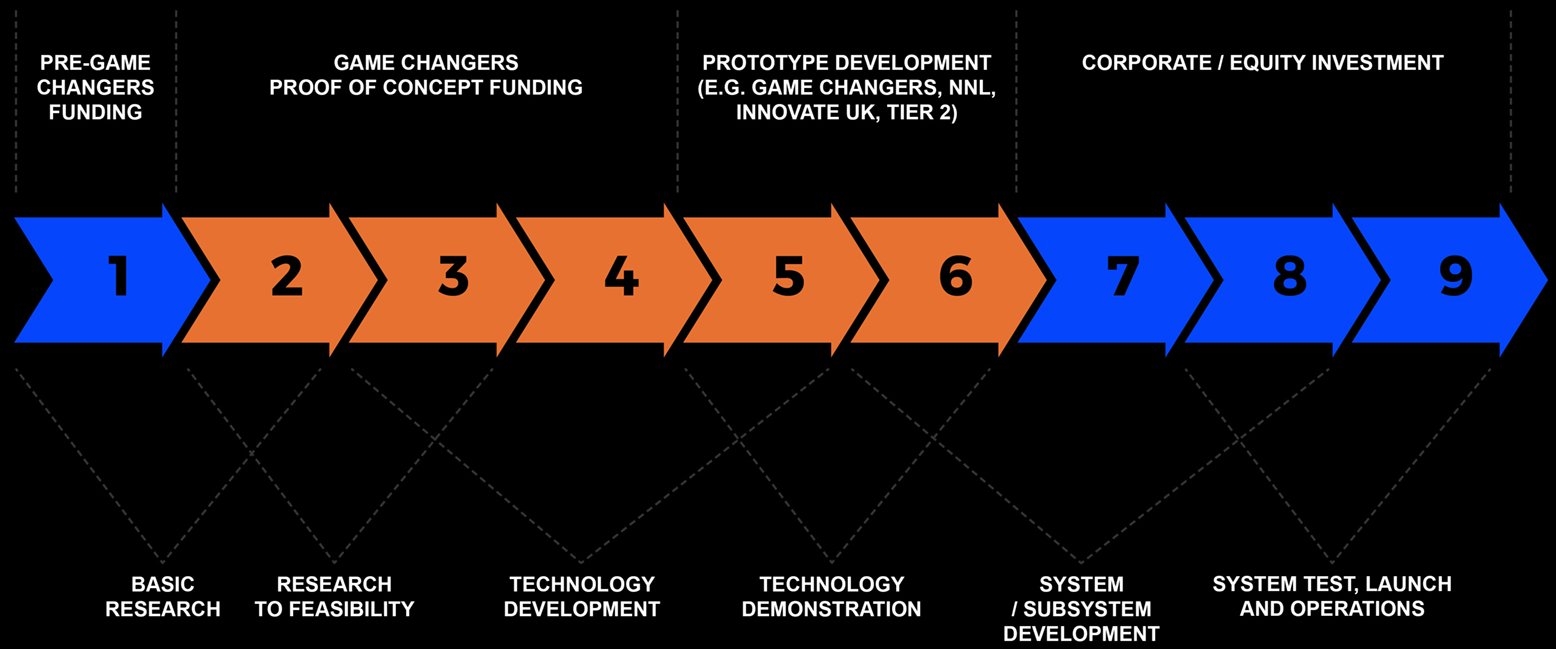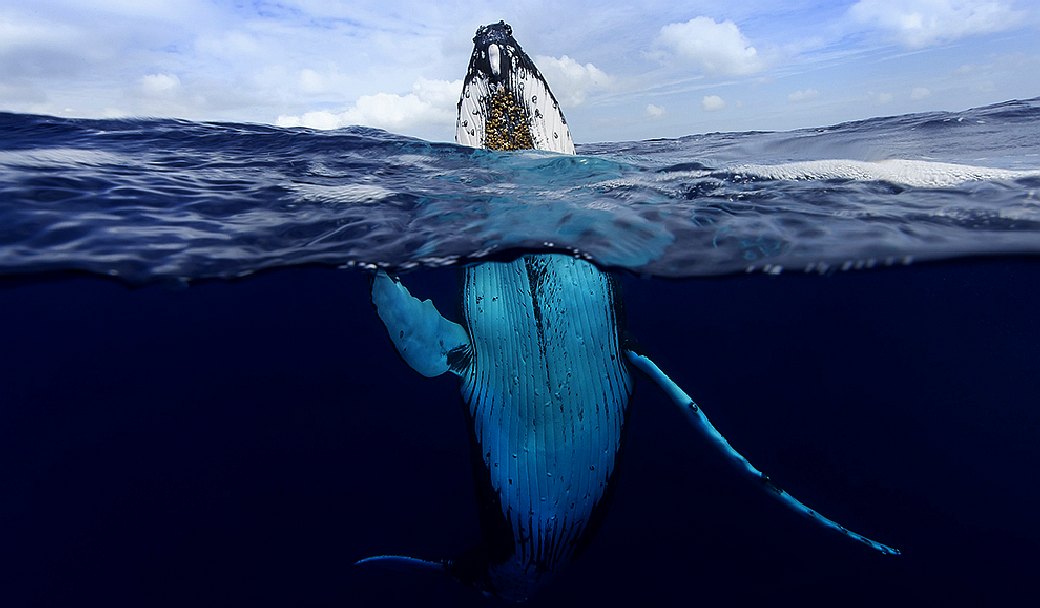|
SEAVAX HEAD DESIGN
ABOUT - CONTACTS - DONATE - FOUNDATION - HOME - A-Z INDEX
OCEAN CONDITIONER - This vessel is designed to operate in fleets to target ocean waste before it settles on the ocean floor where nobody can recover it. There is nothing like it in existence today, though other ideas for trapping plastic waste are being developed, such as that of Boyan Slat and the Seabin. This model was produced to run some very basic experiments to prove the concept. We are now looking at improving such design to incorporate bulk plastic sifting and granulating ahead of micro and macro plastic separation. See drawings of suggested improvements below.
HEAD SHAPE - The swept area of the collector head is important as well as the depth of operation. If the swept area is increased by a factor of two, then the potential for collection is doubled with each sweep of the ocean, though sweep in terms of moving through the water is somewhat confusing if you include currents when comparing to movement in nautical terms. We are working to increase collector head area of the SeaVax. Subject to proof of concept experiments, it may be possible to near double the effective sweep area.
The question is would such improvements be practical in relation to the increase in complexity of what is already a relatively complicated machine? Think about washing machines for a moment. They stated out as simple domestic appliances using a clockwork mechanism and simple switches. They are now equipped with electronic controls and sensors.
LOWERED & OPEN - This diagram shows that it is possible to double the sweep pattern of Seavax using fold out booms. This has always been on the cards, but needs to be tested by altering the existing 1/20th model, or making another - for which we need funding.
An escalator is included for large plastic items - again something to be developed. The whole assembly has moved forward, while a larger storage container has come to the centre. For these tests full size, we will need a helm and cabin space for the scientists to be able to conduct trials at sea independently of the eventual autonomous navigation system that we are hoping to develop next year with H2020 funding. The collector head is seen here deployed (lowered) into the ocean. See diagram below for raised operation.
Care has to be taken not to conflict with the wind harvesting apparatus, where it will be necessary to lift the collector head for shallow waters and docking operations. Copyright diagrams © 22 November 2018 Cleaner Ocean Foundation Ltd. All rights reserved, save for educational and research purposes.
RAISED & FOLDED - This diagram shows the booms folded back to the sponsons and the collector head raised for beaching and servicing using an Ampimax, or for journeys to other geographical hotspots in a reduced drag mode.
The quickest way to test these concepts is to produce a rough working model that once debugged for design flaws can then be refined for:
1. full size test tank confirmation and 2. for mounting in a pre-production Seavax prototype.
We started with an aluminium funnel situated between two forward facing sponsons of a trimaran hullform as per the pictures above and below. This configuration worked reasonably well in tests, sucking up plastic from our test tank and returning clean water to the basin. Though it soon became clear that improvements were needed in selecting the appropriate ratio of final filter mesh and area to pump capacity. We will concentrate on the hydrodynamics and design development of the collector head on this page, that is of course subject to funds becoming available for this necessary research.
This important research is needed to accelerate the technology to a more advanced stage of readiness, if it is ever to be deployable as an efficient ocean cleaning system.
IN LINE ASSEMBLY - The alloy collector head and hydrocyclones in series. Twin pumps pulled water through the system. The blocker was the ratio of final mesh to pump capacity. By selecting the wrong area and mesh size, we limited the efficiency of the system from the ideal. It may be possible to eliminate the final mesh altogether, or replace it with a variable mesh system. If using a mesh system, this would have to be self-cleaning and emptying. Marine biota would have to be removed in advance of this stage of filtration. Copyright photographs © Cleaner Ocean Foundation Ltd. All rights reserved, save for educational and research purposes.
CONSTRUCTION - In this photograph you can see how a mill is incorporated in the 2015 prototype collector head. The head worked well enough when tested in our small water basin, removing floating plastic from the water. If we are able to increase the sweep area using the same trimaran hull configuration, fleet operations will be that much more effective.
INFOGRAPHIC - Though not the actual layout of the machinery, this diagram makes it easy to understand the three basic stages of filtration to be employed by a SeaVax ocean dustcart, with the third stage of filtration optional, but we believe advantageous.
TRL 1 - TRL 2 - TRL 3 - TRL 4 - TRL 5 - TRL 6 - TRL 7 - TRL 8 - TRL 9 - TRL 10
TRL SCALE - The TRL scale is a metric for describing the maturity of a technology. The acronym stands for Technology Readiness Level. The scale consists of 9 levels. Each level characterises the progress in the development of a technology, from the idea (level 1) to the full deployment of the product in the marketplace after level 9.
...
...
LINKS & REFERENCE
http://www.
MARINE LIFE - This humpback whale is one example of a magnificent animal that is at the mercy of human activity. Humans are for the most part unaware of the harm their fast-lane lifestyles are causing. We aim to change that by doing all we can to promote ocean literacy to help reduce our plastic, food and carbon footprints.
This website is provided on a free basis as a public information service. Copyright © Cleaner Oceans Foundation Ltd (COFL) (Company No: 4674774) 2018. Solar Studios, BN271RF, United Kingdom. COFL is a charity without share capital. The names Amphimax™ RiverVax™ and SeaVax™ are trademarks.
|
